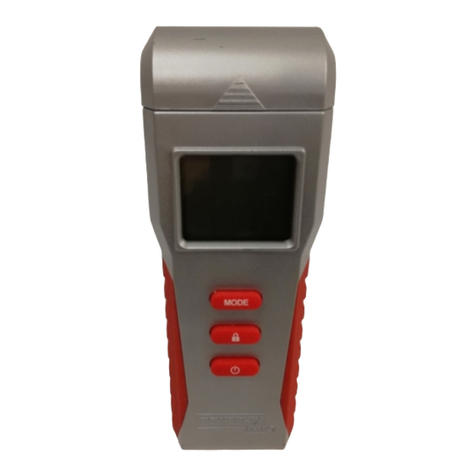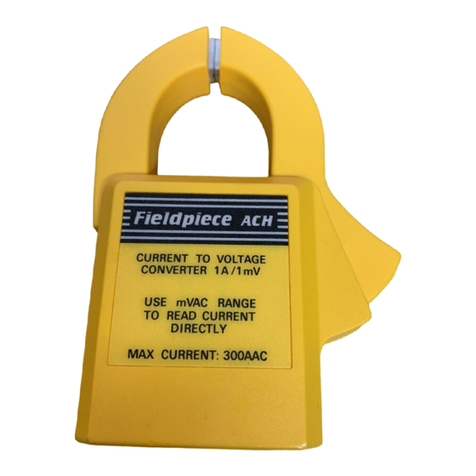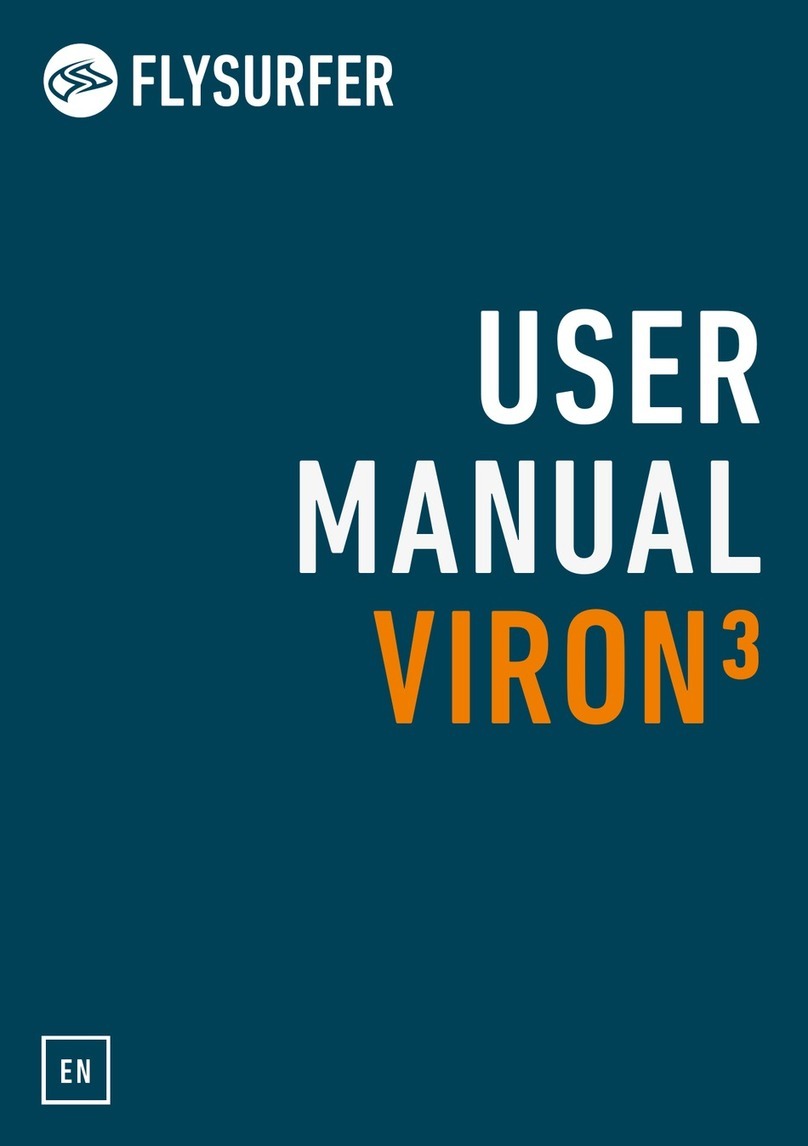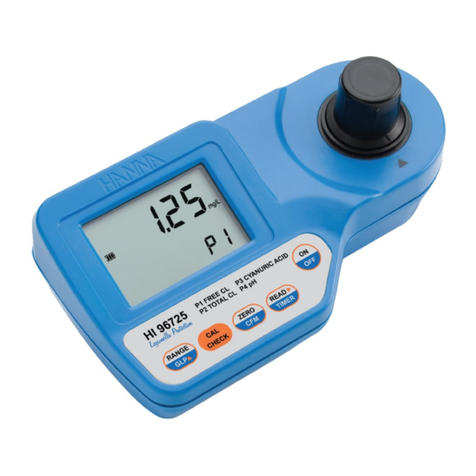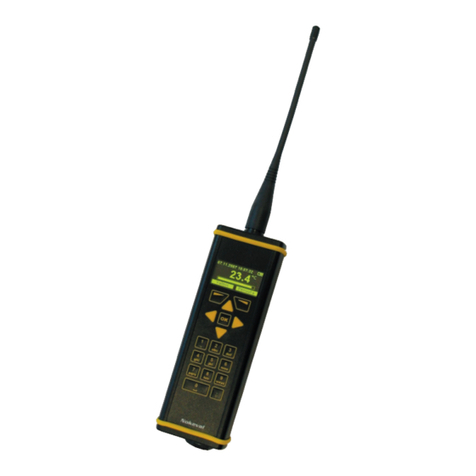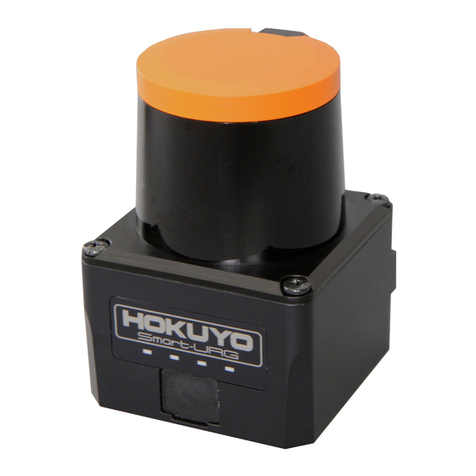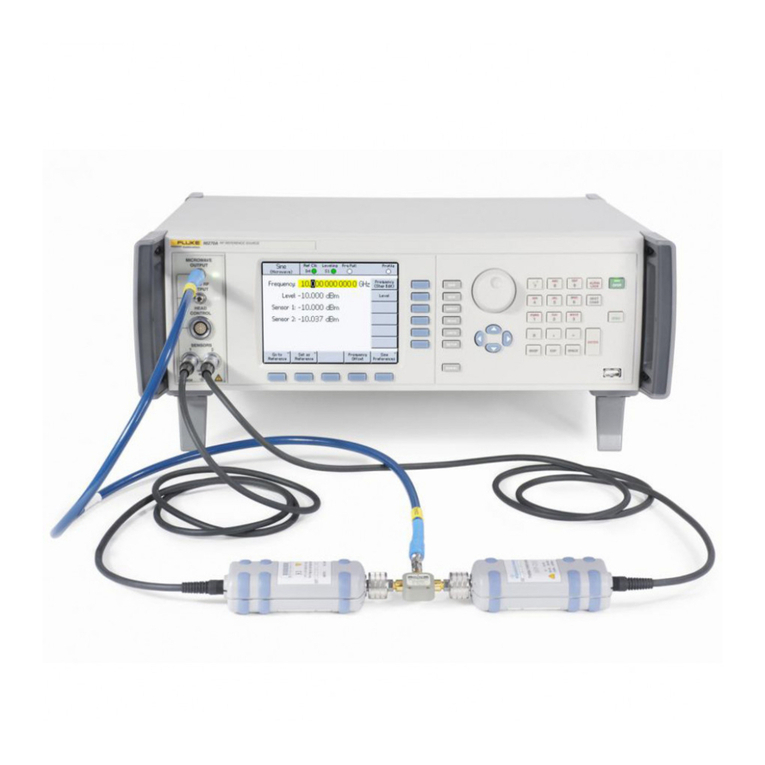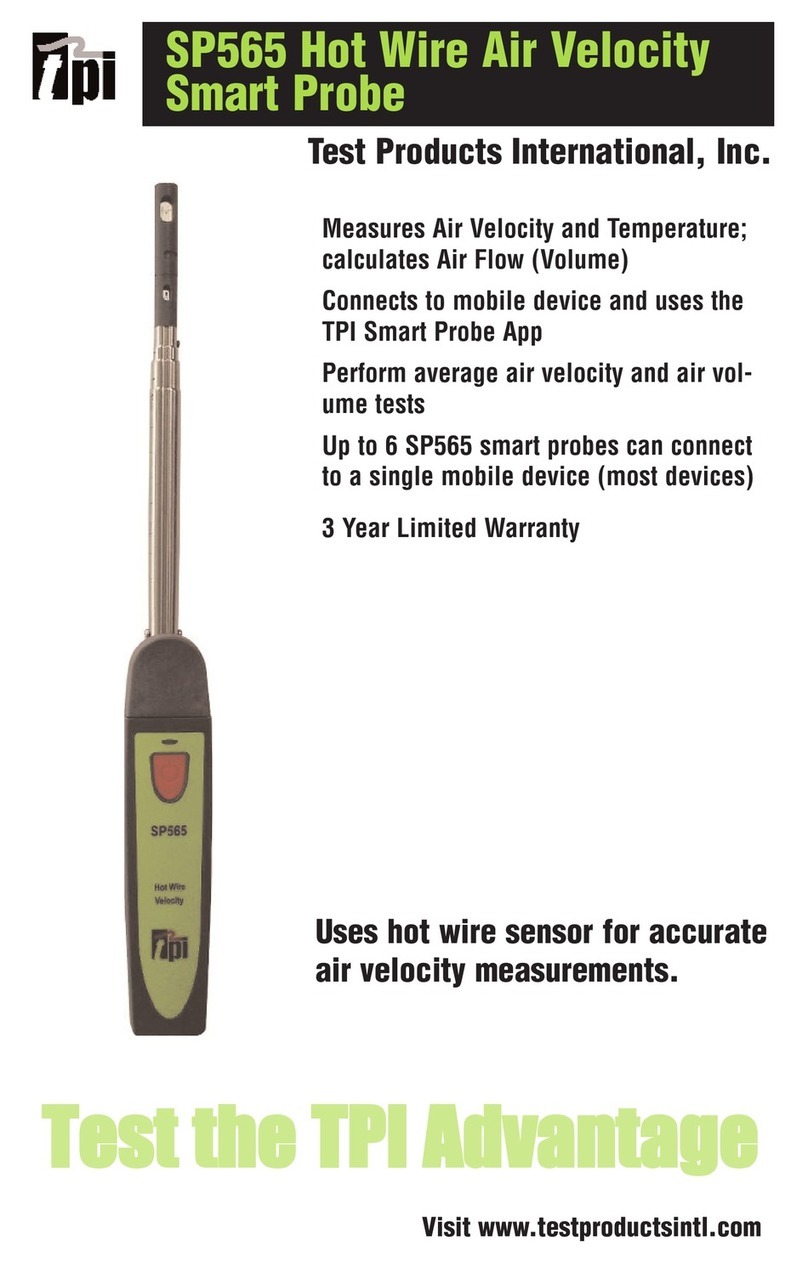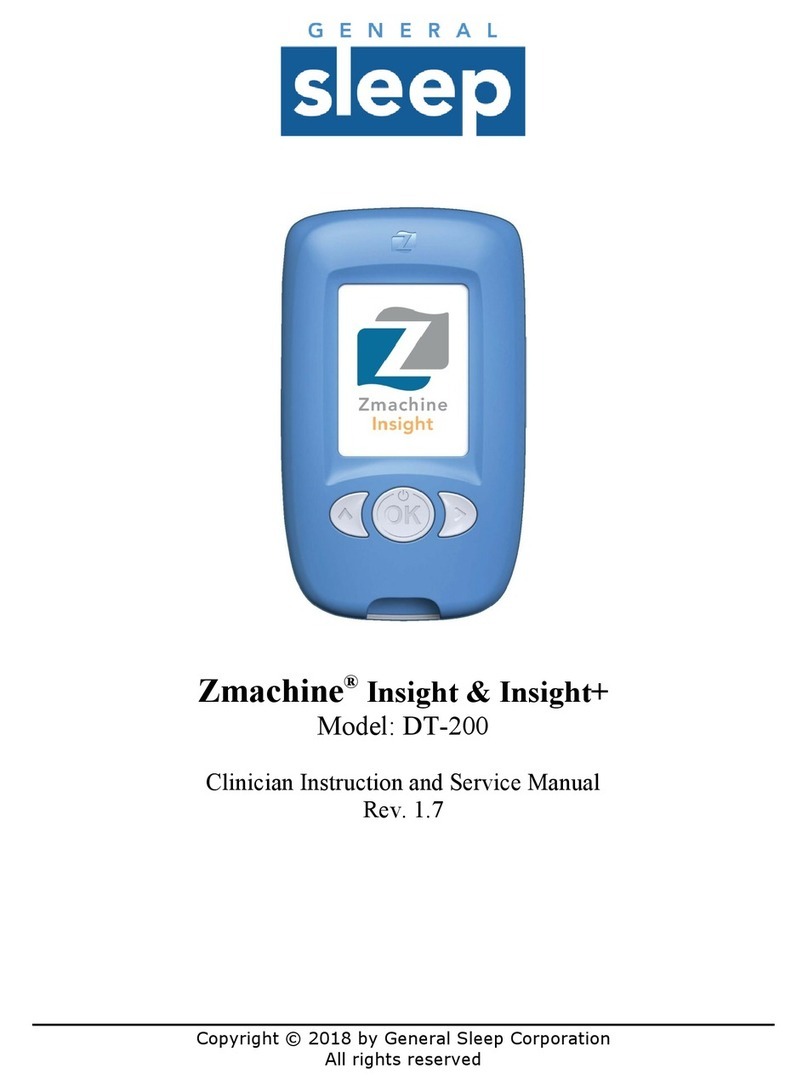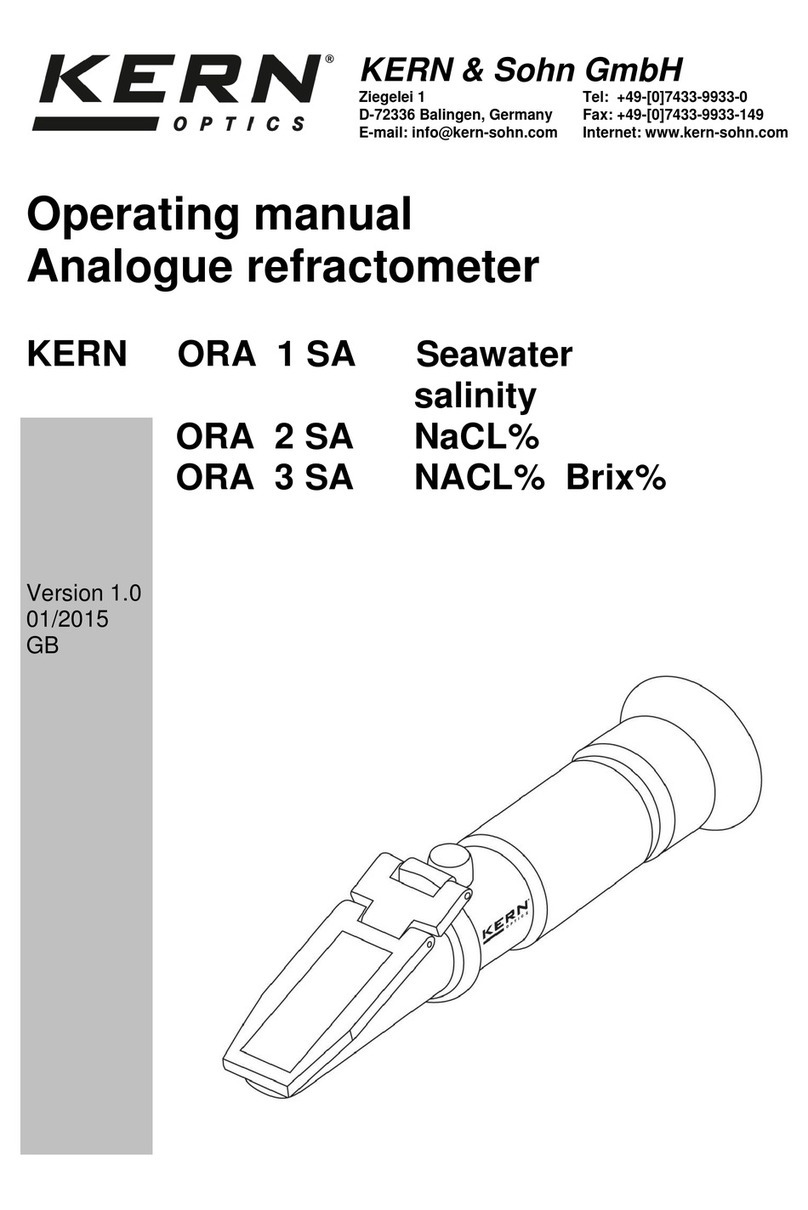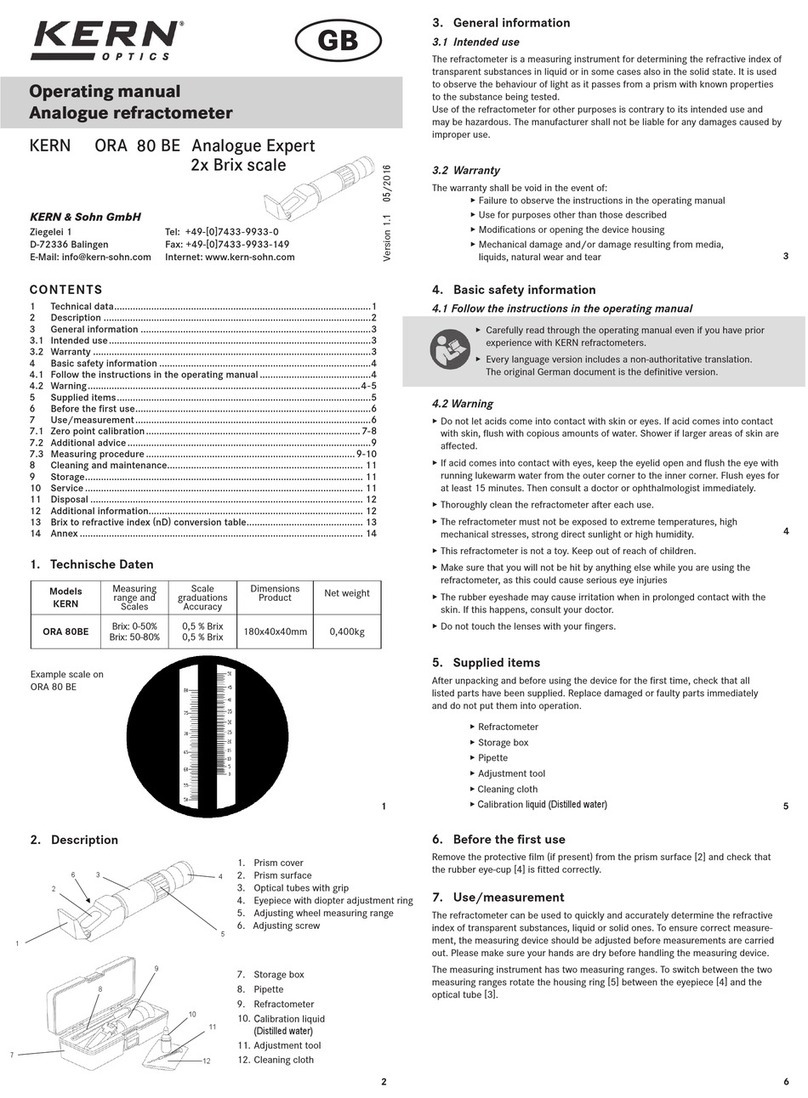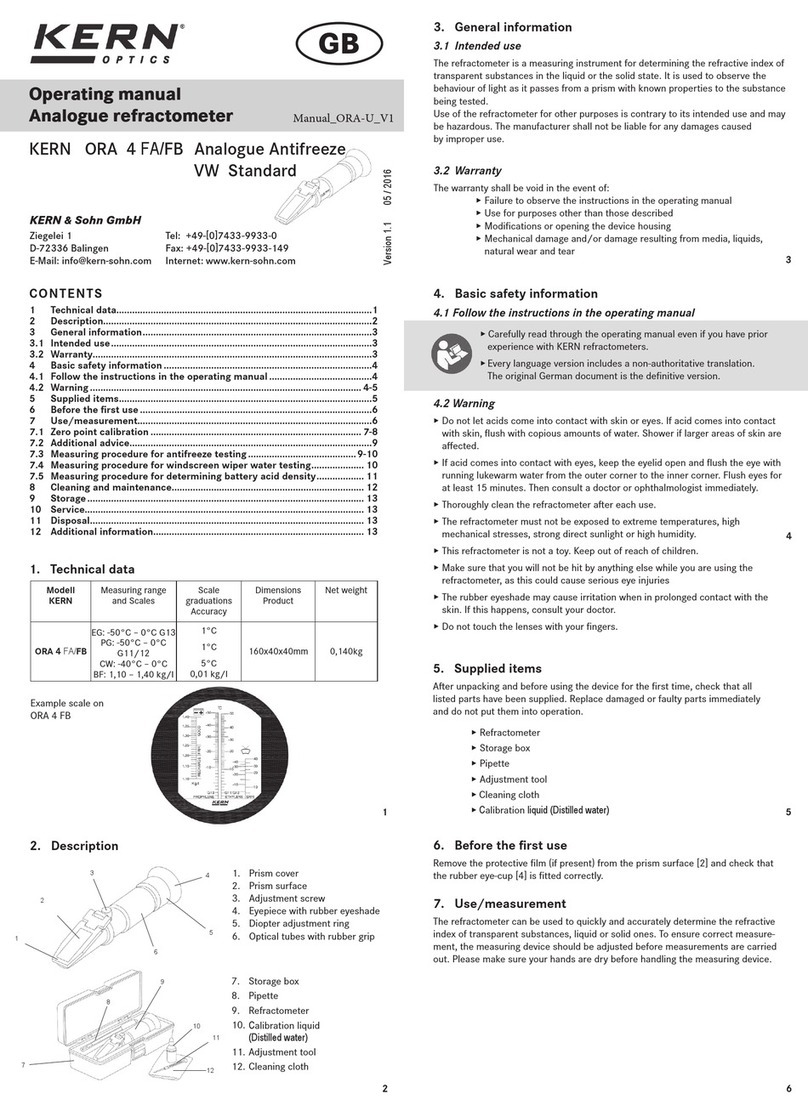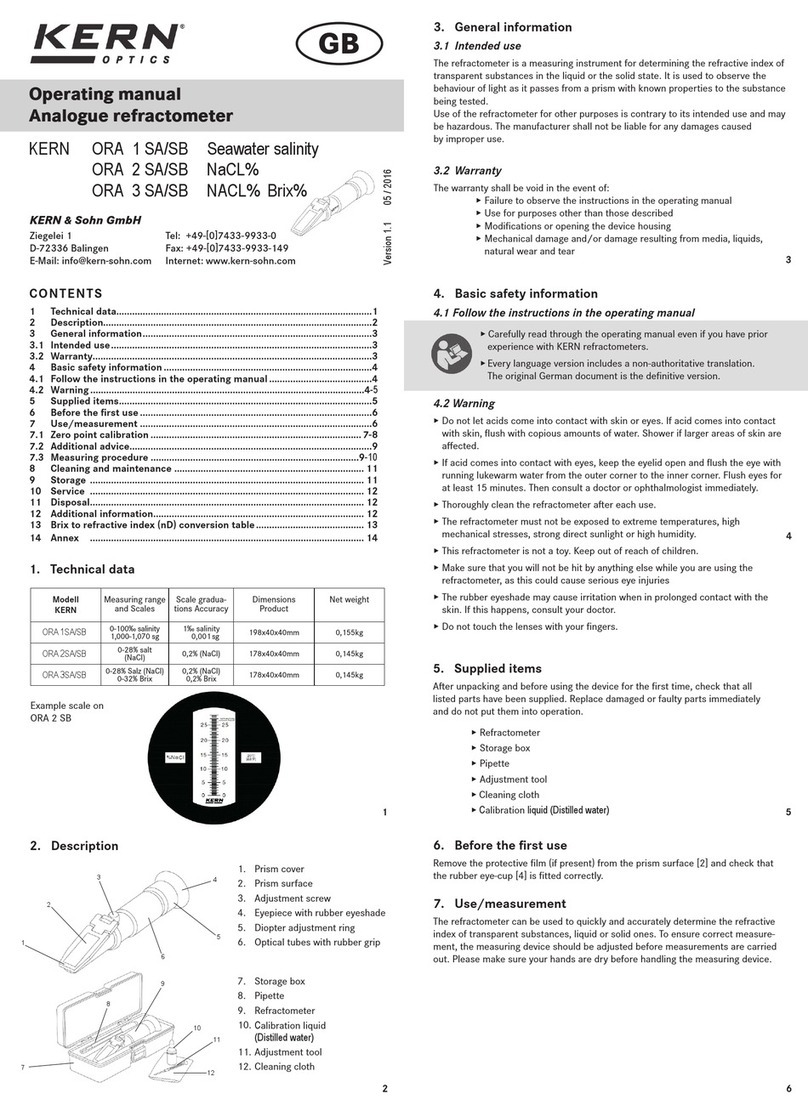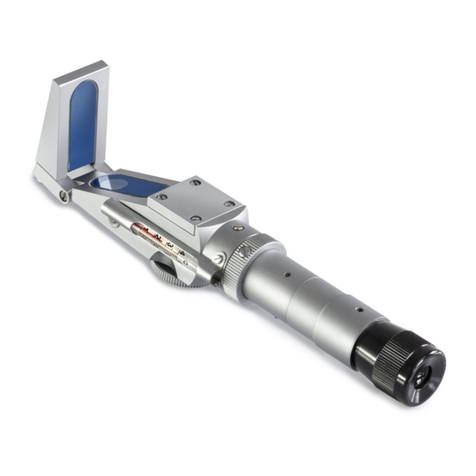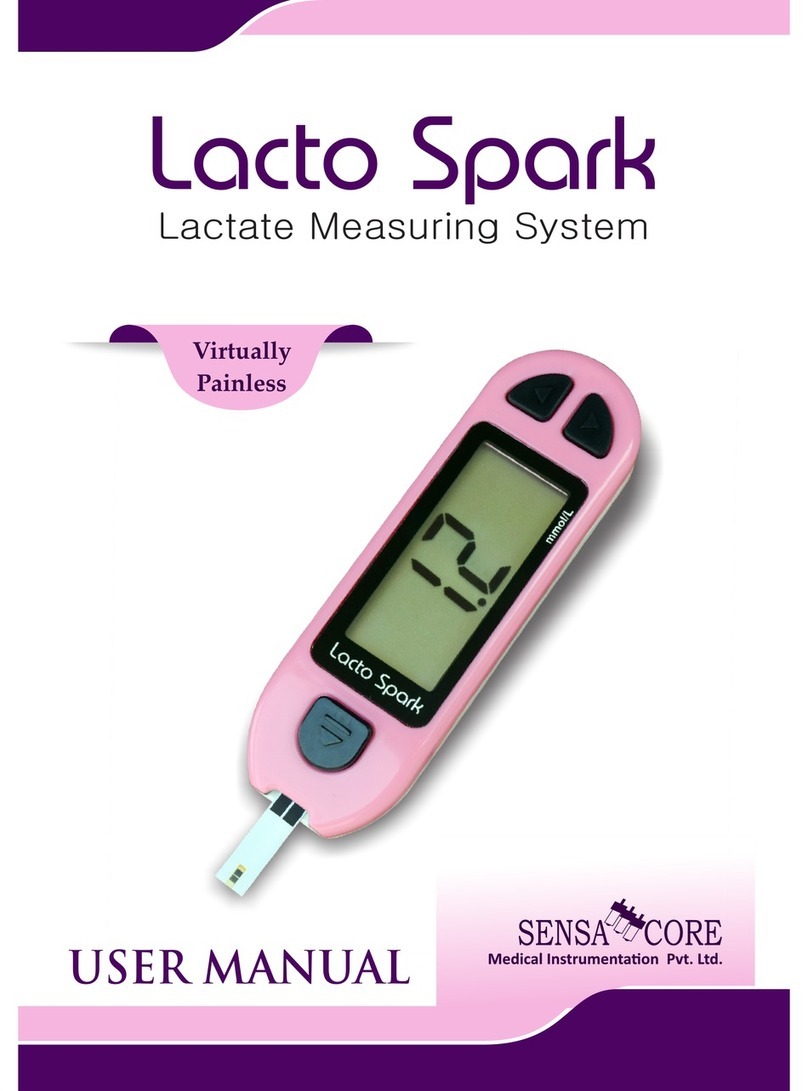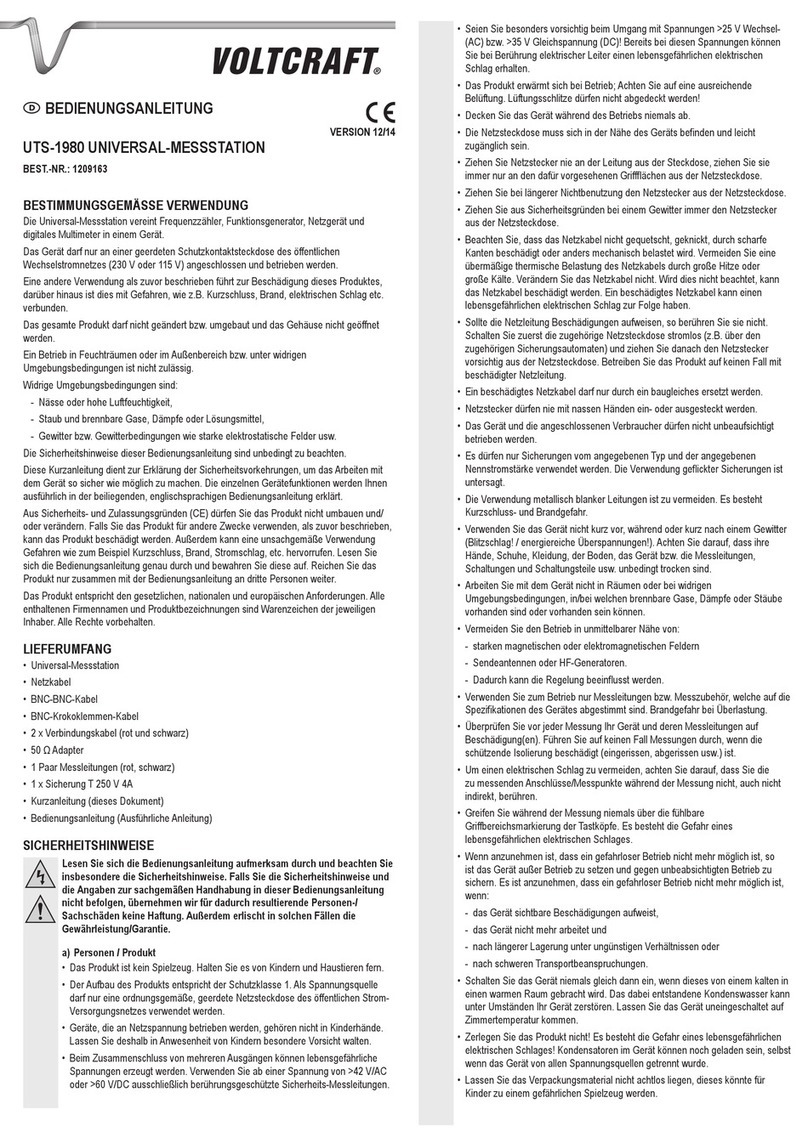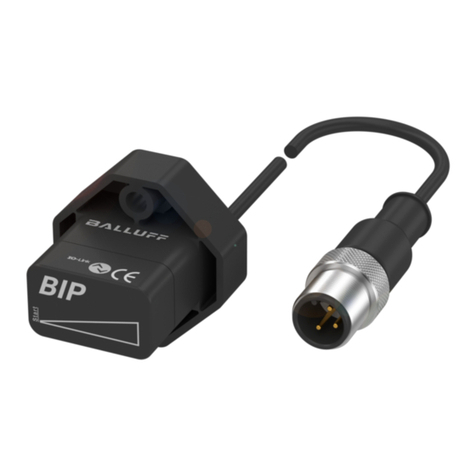
7 ORA_1GG-BA-e-1510
6 Use/measurement
The refractometer can be used to quickly and accurately determine the refractive in-
dex of liquid, solid, and pasty samples. Please make sure your hands are dry before
handling the measuring device. The protective plate [5] must be open during measur-
ing procedure and after having finished must be reclosed.
The measured temperature can be read off with the aid of the thermometer provided.
Both the measuring prism [6] and the illumination prism [5] can be connected to a
water circuit. On the casing [2] and on the illumination prism [5] are connecting stubs
for a water flow and return. Install the water circuit such that the water first passes
through the two parts of the casing and then exits at the thermometer. This allows a
more precise temperature reading. The water supply device is not included as part of
the scope of delivery.
Important!
The ambient/room temperature and the sample temperature influence the refracto-
meter measuring result.
The scales are designed for an ambient temperature of +20 °C!
6.1 Calibration with distilled water
Prior to any kind of measuring procedure a calibration should be effected.
Zero point calibration may be carried out by using distilled water. This is the more
convenient way to calibrate the refractometer, but not as accurate as the calibration
with block, described under 7.2. Open the illumination prism [5], apply some drops of
distilled water to the measuring prism [6]. Close the Illumination prism [5] and lock
with the prism lock [13]. Open the protective plate [12] and close the reflection mirror
[11]. Now look through the eyepiece and using the adjusting wheel [8]
bring the scale to the 0%Value. If the image is not in focus, use the adjusting ring on
the eyepiece [4] to focus it. The crosshairs in the upper display should now be con-
gruent with the light/dark line. If the boundary line is not exactly in the centre of the
crosshairs, it must be adjusted. With the aid of the screwdriver provided, move the
adjusting screw [3]. If the boundary line and the crosshairs are congruent, the
calibration is correct. Now clean the instrument, see
point 8.
